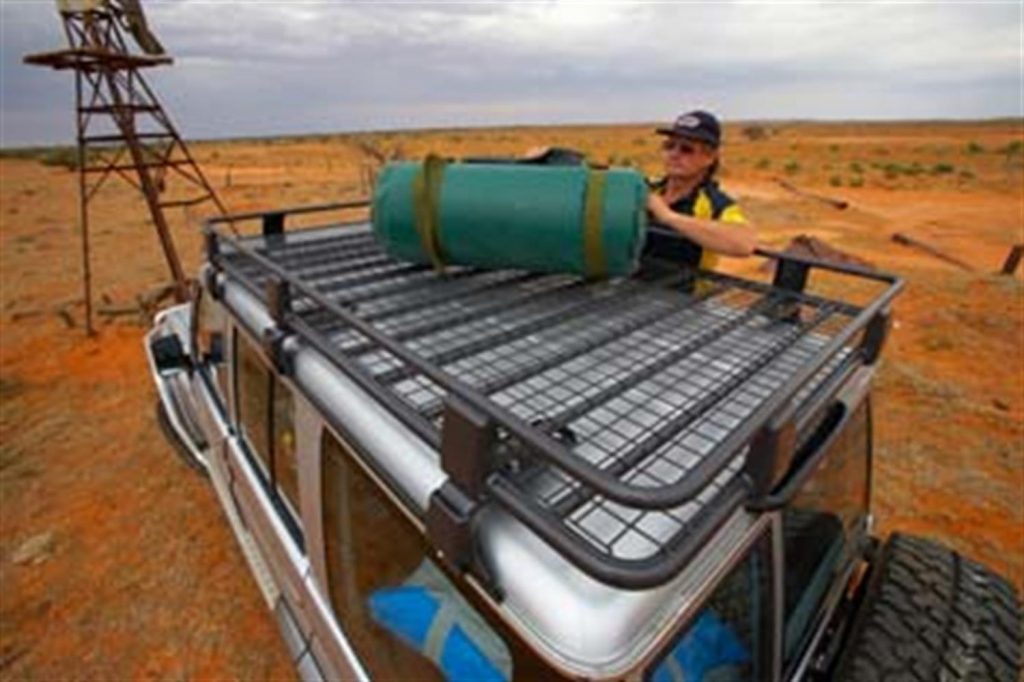
While it’s easy to love the idea of overlanding through a pristine landscape, off-roading is tough. And having the right overlanding, off-road, and car camping gear is vital. So we’ve got a few Overlanding Essentials articles to help you tackle the terrain.
Not sure what overlanding is? Read this.
Let’s Talk About Cargo Racks & Storage.
Perhaps one of overlanding’s most appealing aspects is that you don’t have to lug around all of your camping and off-roading gear on your back.
Problem is, there are still limits to what your car, truck, or SUV can carry.
That’s why the aftermarket has stepped in with a wide range of racks, mounts, storage boxes, totes, bags, and baskets to help you transport your overlanding equipment. So we’ll take a look at some of the most common cargo carrying methods, and list some pros and cons of each.
***
Tie-Downs, Ratchet Straps & Cargo Nets
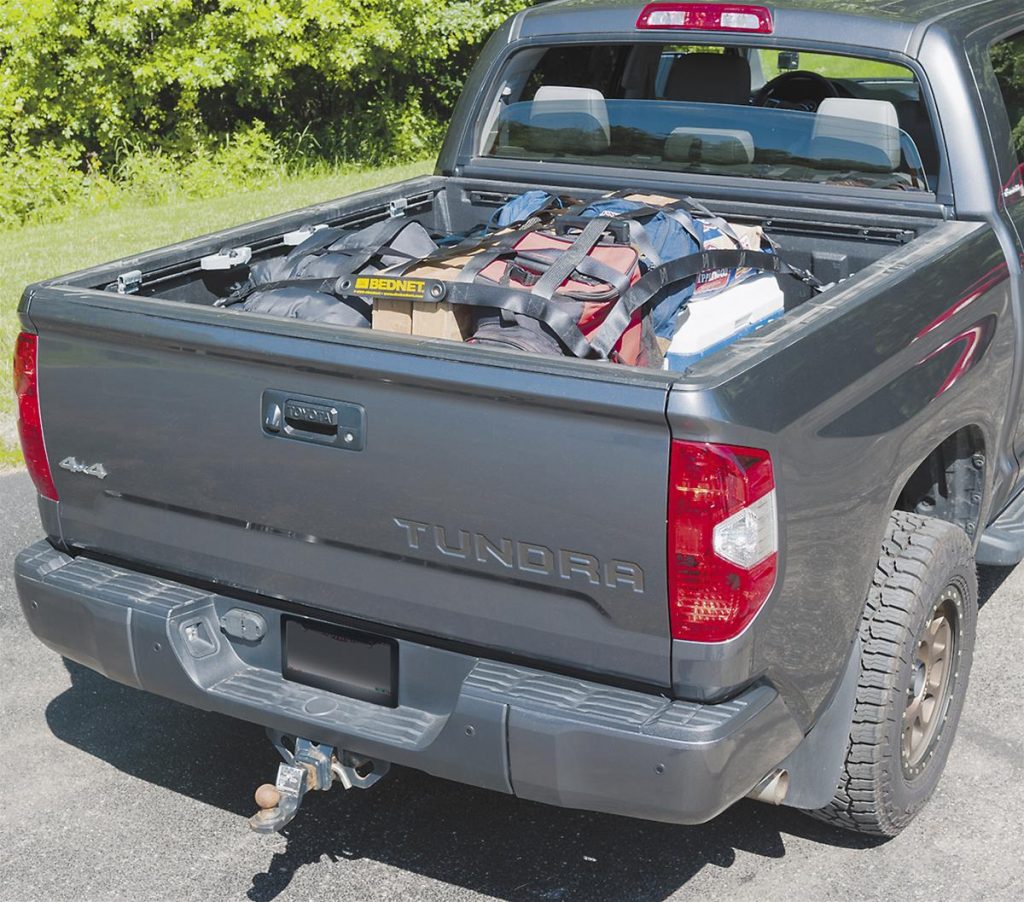
Let’s start with the basics. You’ll probably need an assortment of straps, bungees, nets, and tie downs.
You’re probably well familiar with bungee cords. They’re plenty versatile and really helpful for interior cargo. But when it comes to securing heavy objects outside the vehicle, you’ll probably want something a bit more stout.
Ratcheting tie-downs, AKA ratchet straps, usually fit the bill. You can get ratchet straps in a wide range of sizes and lengths, the larger versions tend to hold more and are designed for locking-down heavier objects like motorcycles and cars. Smaller straps are cheaper and useful for smaller cargo like camping supplies and off-road gear.
***
Roof Safari Baskets
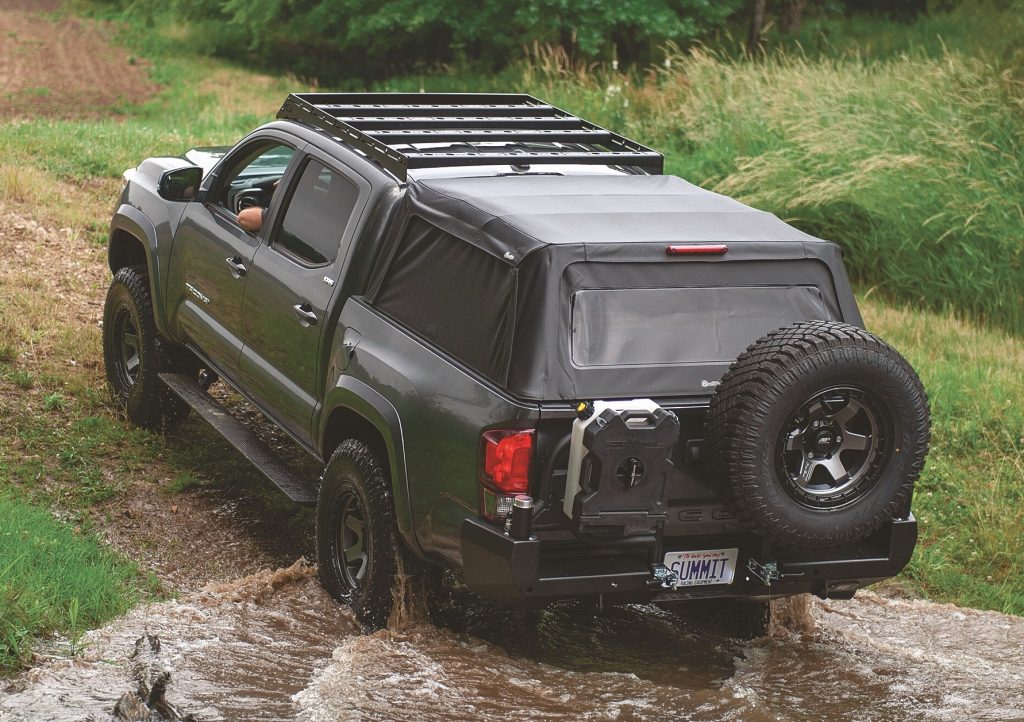
Watch any old overlanding or expedition footage, and you’ll see virtually every off-road vehicle outfitted with some sort of roof-mounted basket. You’ll often hear them referred to as “safari” baskets because, uhhh-doy, they were a common sight on African safaris. You’ll obviously need a luggage rack or roof crossbars to mount these.
- Pros: They’re versatile, so you can toss practically anything up there, as long as you don’t exceed your roof’s weight capacity—spare tires, large tent packs, utility jugs, chainsaws, etc. And there are plenty of places for you to secure cargo netting and tie-down straps.
- Cons: Your gear is exposed to the elements and prying eyes. Equipment may snag on overhead branches. It can be difficult to tie a bunch of different gear up there with a mishmash of straps and netting. (A large cargo bag, however, solves a lot of these issues.)
***
Roof Cargo Boxes
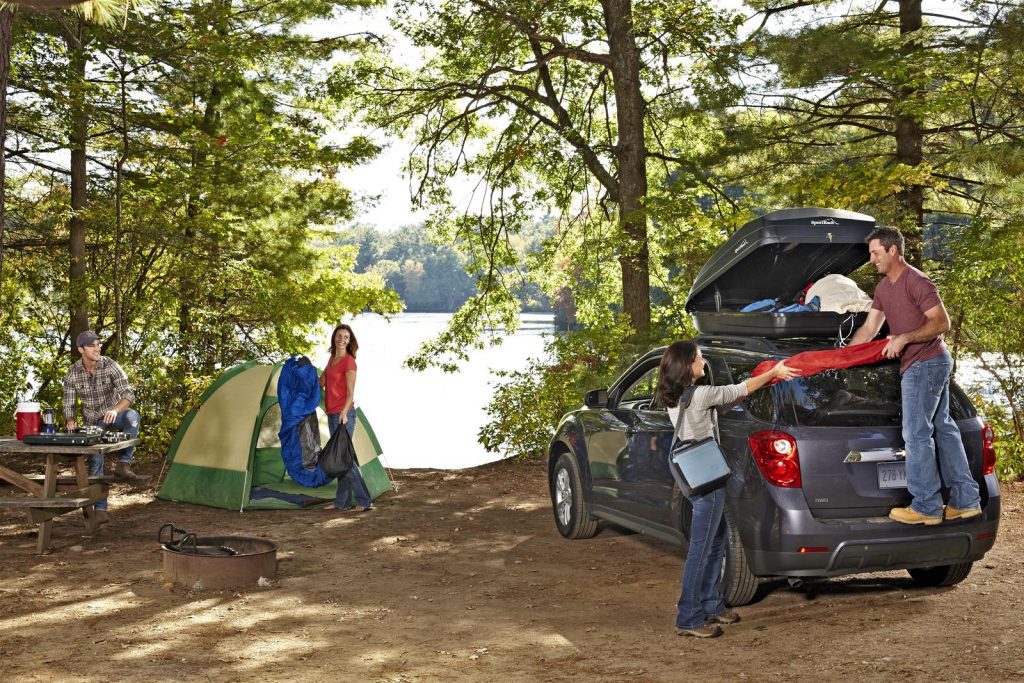
A longtime mainstay of summer road trips, roof-mounted cargo containers work well in a lot of overlanding scenarios as well. Just like the cargo baskets mentioned above, you’ll need a luggage rack or roof crossbars to install one.
- Pros: Roof Cargo Boxes are more secure than a basket or bag. Many are lockable and feature weathertight seals to keep moisture out. It can also be easier, once the box is installed, to toss gear up there and simply close the clamshell instead of fidgeting with nets or straps.
- Cons: You’ve got a finite amount of space. And overlanding gear often comes in weird shapes and sizes, which can further limit your cargo room. They can also crack and distort when struck by a tree branch or other off-road obstacle.
***
Hitch-Mounted Cargo Carriers
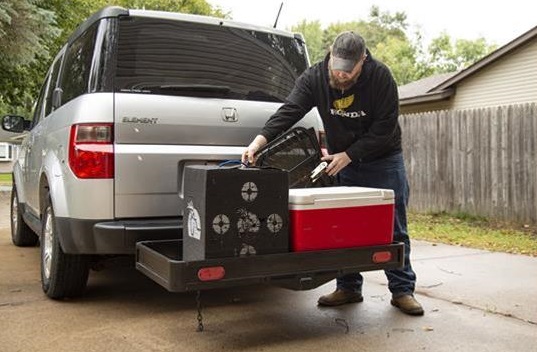
If your overlander’s roof can’t handle a box or rack (or if it’s already occupied by a rooftop tent), then a hitch-mount cargo carrier can offer some extra storage space. As the name implies, these racks feature a tongue that slips into your vehicle’s receiver hitch. (And if your vehicle didn’t get one from the factory, you may be able to install an aftermarket receiver hitch.)
- Pros: Really easy to put one on—just slip it into the receiver. That also means they’re really easy to remove too. Some fold up against the vehicle body to keep them out of harm’s way when not in use. You’ve also got quick access to your gear; no need to climb up to your roof.
- Cons: Given that it significantly limits your departure angle, a hitch mount isn’t ideal for many off-road scenarios. Trail riding also means a lot of bumps and twists, which can damage both the carrier and the hitch, so be extra careful when selecting a hitch-mount cargo option for overlanding. (As noted above though, you may be able to remove it at camp before you begin any serious off-roading.)
***
Specialty Racks for Bikes, Watercraft & Skis/Snowboards
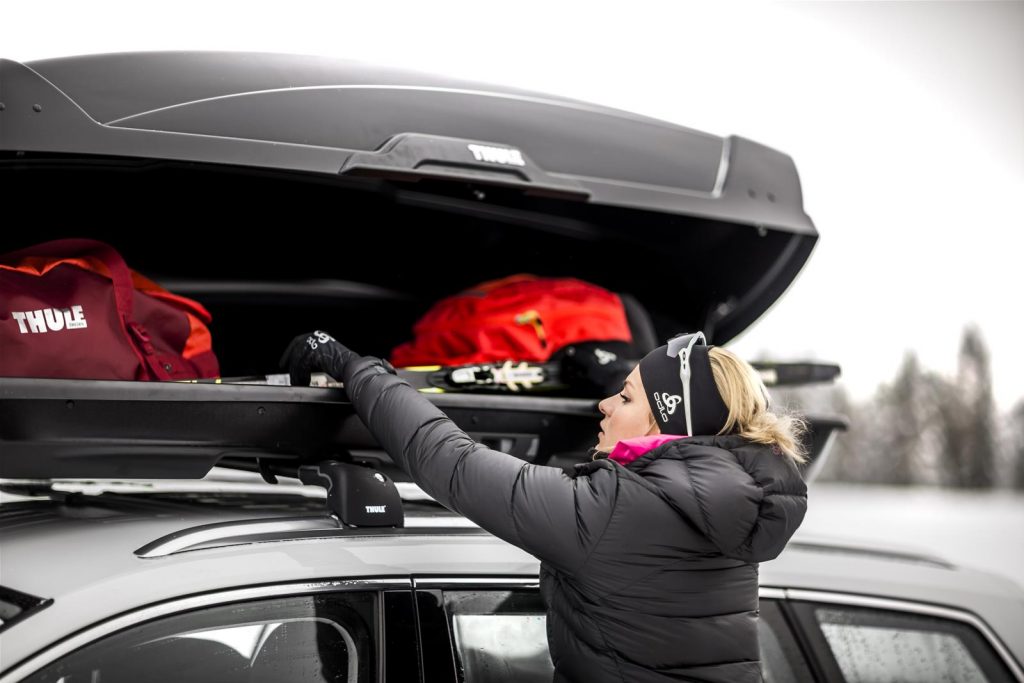
There’s a big overlap between overlanding enthusiasts and folks who enjoy outdoor activities that involve a kayak, snowboard, or mountain bike. As such, the aftermarket has stepped up with specialty racks for all these adventures.
A specialty rack is a smart way to ensure your toys arrive in one piece—while maximizing your storage capabilities at the same time.
From canoes to dirt bikes, there are vehicle racks to accommodate a wide range of specialty applications. Given the specific nuances of each rack, we’ll forgo a pro/con list here, but it’s important to understand what each rack is designed for, how much your vehicle can handle, and what kind of overlanding environment you’re venturing into.
***
Truck Bed Overlanding Racks & Storage
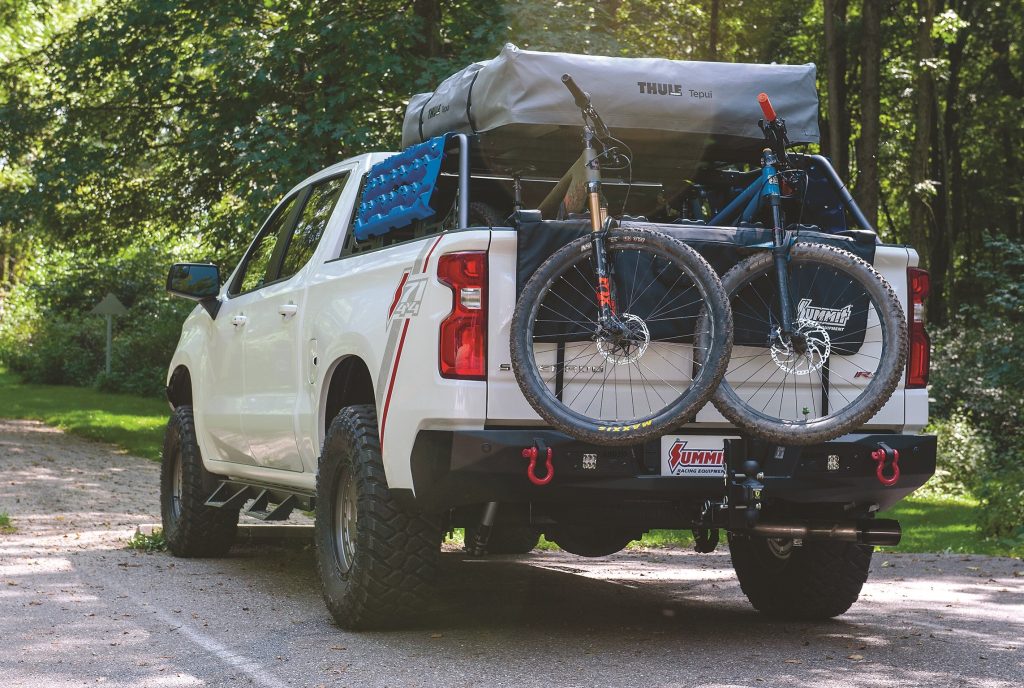
Depending on how you look at it, truck owners have some cargo carrying advantages and disadvantages. While the bed makes for plenty of exterior storage, it eliminates a lot of roof space and interior room. Regardless, a truck bed cargo rack will help with some of those potential disadvantages.
- Pros. A well-designed truck cargo rack can unlock tons of usable space to hold large gear, including tires, kayaks, and bicycles. More importantly, companies have complete truck bed cargo box solutions to maximize functional space—and keep it secure.
- Cons. A truck bed storage rack may be a non-starter if you have a truck cap or plan on sleeping on a truck bed air mattress (or use a truck tent). A truck bed rack can be quite large too, which means you might be looking at a permanent installation in a lot of cases.
***
Cargo Storage Boxes, Totes & Containers
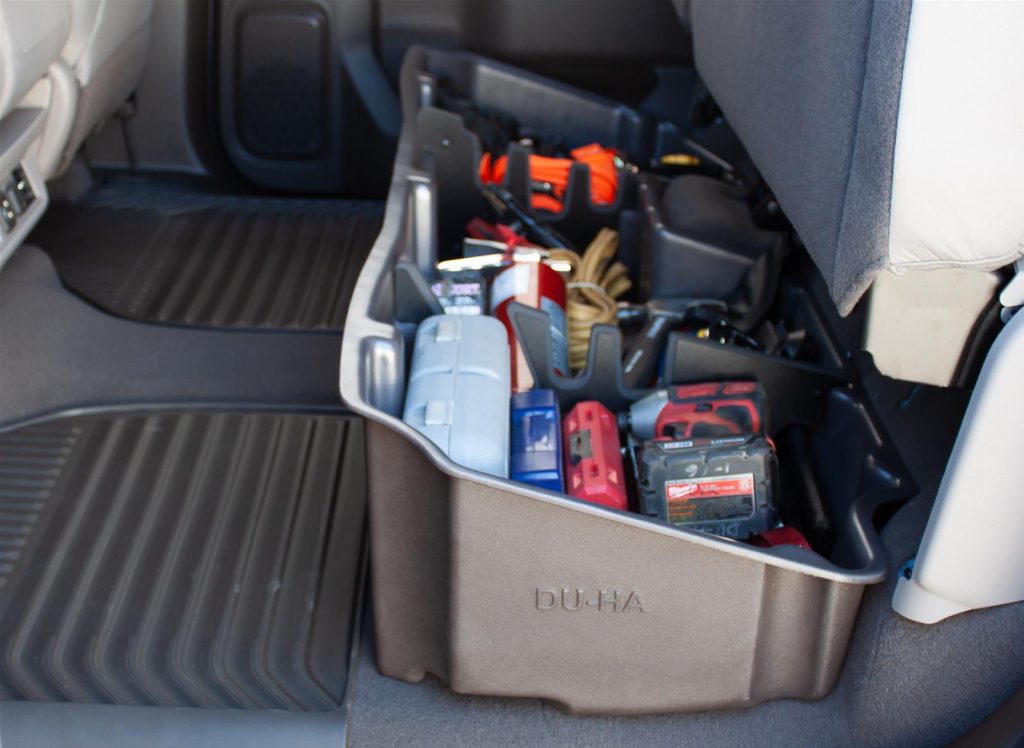
We’ve mentioned this in some of the other Overlanding Essentials articles, but cargo storage is very important—properly storing stuff not only helps you carry it, it protects your gear from the elements and curious critters.
Several companies make large storage boxes that conform to the interior of specific vehicle models, fitting snugly under seats and along floor pans, so they’re a great way to maximize your available space.
Stowing your gear in designated containers also makes it easy to inventory your tools and equipment (if you’ve ever forgotten a wrench somewhere on a trail, you understand what we’re talking about here). Small storage cases and tote bins are a smart way to ensure everything’s accounted for before you venture on.
Portable tool boxes are a no-brainer here as well. Just make sure your overlanding tools are stowed where they’re easily accessible if you need to make quick trailside repairs.
Oh, and if you’re looking for a Con bullet point for tool and cargo bins, then friend, you’re in the wrong place. Proper storage is all upside here.
***
Cargo and storage demands are different depending on the off-road vehicle you’re using on your overlanding or camping adventure, so it’s difficult to put together a truly comprehensive list of all your available rack and storage options.
That said, hopefully this post gives you an idea of what off-road cargo gear is out there. Did we miss anything? Or do you have a unique cargo requirement or specialized storage solution? Let us know in the comments below.

[…] While it’s easy to love the idea of overlanding through a pristine landscape, off-roading is tough. And having the right overlanding, off-road, and car camping gear is vital. So we’ve […] Read full article at http://www.onallcylinders.com […]
It’s nice that you talked about how roof rack baskets are quite versatile, as you can toss practically anything on them. My family is about to go on a vacation this year but I just realized that we don’t have much in the way of space for our luggage. Getting a roof rack basket sounds good so I’ll probably ask a professional to install one before we go on that vacation.